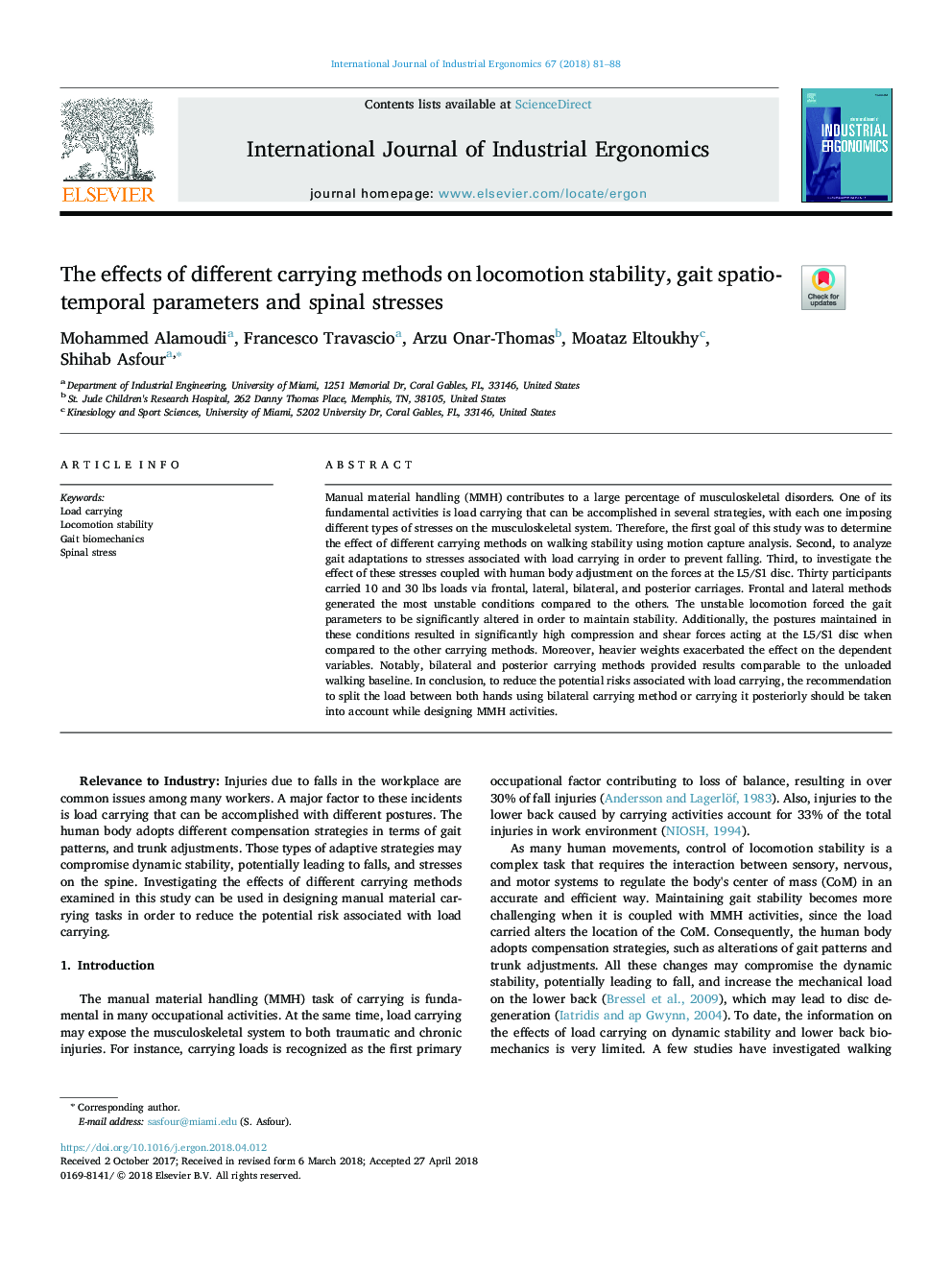| Article ID | Journal | Published Year | Pages | File Type |
|---|---|---|---|---|
| 7530380 | International Journal of Industrial Ergonomics | 2018 | 8 Pages |
Abstract
Manual material handling (MMH) contributes to a large percentage of musculoskeletal disorders. One of its fundamental activities is load carrying that can be accomplished in several strategies, with each one imposing different types of stresses on the musculoskeletal system. Therefore, the first goal of this study was to determine the effect of different carrying methods on walking stability using motion capture analysis. Second, to analyze gait adaptations to stresses associated with load carrying in order to prevent falling. Third, to investigate the effect of these stresses coupled with human body adjustment on the forces at the L5/S1 disc. Thirty participants carried 10 and 30 lbs loads via frontal, lateral, bilateral, and posterior carriages. Frontal and lateral methods generated the most unstable conditions compared to the others. The unstable locomotion forced the gait parameters to be significantly altered in order to maintain stability. Additionally, the postures maintained in these conditions resulted in significantly high compression and shear forces acting at the L5/S1 disc when compared to the other carrying methods. Moreover, heavier weights exacerbated the effect on the dependent variables. Notably, bilateral and posterior carrying methods provided results comparable to the unloaded walking baseline. In conclusion, to reduce the potential risks associated with load carrying, the recommendation to split the load between both hands using bilateral carrying method or carrying it posteriorly should be taken into account while designing MMH activities.
Keywords
Related Topics
Physical Sciences and Engineering
Engineering
Industrial and Manufacturing Engineering
Authors
Mohammed Alamoudi, Francesco Travascio, Arzu Onar-Thomas, Moataz Eltoukhy, Shihab Asfour,
